Two directors discuss how switching from PEX-b pipe with crimp-style fittings to Uponor PEX-a pipe with ProPEX® expansion connections made a big impact on their business. Kimbel Mechanical Systems is one of the nation’s preeminent mechanical contractors, specializing in plumbing, HVAC, and electrical work in more than a dozen states on both sides of the Read more
Industry Blogs

Two directors discuss how switching from PEX-b pipe with crimp-style fittings to Uponor PEX-a pipe with ProPEX® expansion connections made a big impact on their business.
Kimbel Mechanical Systems is one of the nation’s preeminent mechanical contractors, specializing in plumbing, HVAC, and electrical work in more than a dozen states on both sides of the country — from Montana to Massachusetts. Headquartered in Fayetteville, Ark., Kimbel currently maintains 12 regional offices, including six in Arkansas, three in Colorado, and one each in Tennessee, Missouri, and Oklahoma.
The company was originally established as a one-person, new-residential plumbing shop in 1984 in northeast Ohio. A decade later, founder Miles Kimbel relocated and reconstituted his firm 900 miles southwest to pursue new opportunities in Arkansas. Fast-forward a few more years, and Miles’ son Rob Kimbel took over the reins, broadening the company’s reach to include mid- to large-scale multifamily projects, as well as single-family residential.

Residential plumbing with Uponor PEX-a and ProPEX fittings.
While the residential side of the business is still mainly involved in single-family work, the commercial side encompasses multifamily projects, hotels, schools, military housing, assisted-living facilities, and other types of large-scale structures. The company’s total number of employees exceeds 500, and they also rely on a large pool of subcontractors for their commercial work.
Several years ago, directors in both halves of Kimbel’s business found themselves struggling with “huge” and mounting warranty problems caused by damaging pipe leaks — damaging to the properties in which the product had been installed, as well as to the company’s professional reputation.
As a result, they decided to begin transitioning away from PEX-b pipe with crimp-style fittings and start using Uponor PEX-a pipe with ASTM F1960 ProPEX® expansion connections for their plumbing projects.
Hear Kimbel’s journey firsthand from Ryan Pinkerton, Director of Operations in Colorado and Tennessee, along with his colleague Mark Evans, Director of Pre-Construction – Commercial Housing, as they detail the factors that drove the company-wide shift, as well as the beneficial impact Uponor PEX-a and the ProPEX expansion method have subsequently had on both sides of their business.
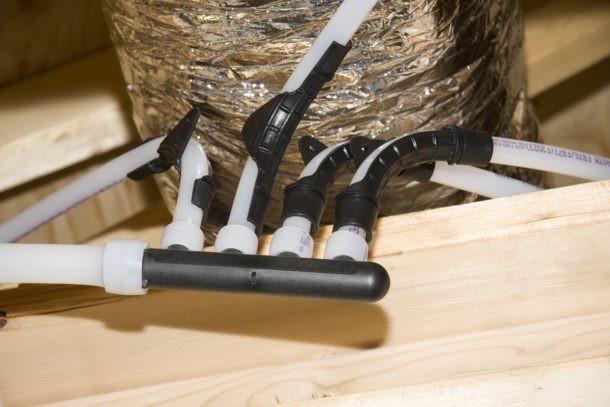
Residential plumbing with Uponor PEX-a and ProPEX fittings.
Residential: Ryan Pinkerton, Director of Operations, Colorado and Tennessee
What is the primary piping product your company uses?
PEX is the known method among the single-family homebuilders we work with today. We might use Schedule 80 CPVC for pipe runs larger than two inches — mains and so forth. But, the majority of our single-family housing work is PEX.
How long have you been using PEX?
We began using PEX not long after I entered the plumbing trade 15 years ago. At that time, for our residential work, we were using PEX-b from another brand. However, we were having so many leaks with the crimp-style connections.
What were some of the issues you encountered with PEX-b crimp connections?
Over-calibrating was an issue. Because you can over-calibrate crimpers, it created a weak spot in the fitting that can crack under use. Also, if you position the crimp ring too far back, it can hold under the air test, but blow off when you turn on the water. The problems were huge, ongoing, and cost us hundreds of thousands of dollars in repairs.
Why did you switch to Uponor PEX-a pipe and the ProPEX® fitting system?
We needed to decrease our warranty costs to repair crimp connections as well as improve the relationships with the homebuilders we served. We also liked the increased water flow that the Uponor system provided. Crimp-style connections reduce the diameter of the PEX-b pipe and, as a result, lower the flow rate. That’s not the case with the ProPEX expansion-type fitting on PEX-a pipe. That has been a key, positive factor for us with the switch.
Commercial: Mark Evans, Director of Pre-Construction – Commercial Housing
Why did your commercial team choose to make the switch?
We use contract installers, and we had so many different people doing the work, it was hard to maintain quality with crimp. The Uponor ProPEX expansion method and the simplicity of the expansion tool for making PEX-a connections worked a lot better for us.
Were there issues with other piping products?
We had numerous leak issues with our larger water mains where we used CPVC at the time. CPVC joints are only as good as the installer who glues them. Once we learned Uponor offered PEX-a in larger diameters, that opportunity to reduce our water-main leak problems also helped drive the switch to Uponor.
Was it difficult for your workers to switch?
Uponor came to our job sites to train our crews on the ProPEX connection method. This training was quick and simple. Once we got everyone on board, the leaks went down drastically. Additionally, our contract plumbing installers are now faster and more productive with Uponor PEX-a. Although most of our contract installers work only for us, we still pay them for piecework. As a result, installation speed really matters for these independent contractors. They know that if you are not fast, you are not profitable. Thanks to the training they received, these contract installers are now familiar working with PEX-a. They have learned to install it quickly without mistakes.
To learn more about Uponor training opportunities for your team, visit uponor.com/training. To learn how Uponor can help bring greater productivity and performance to your residential or commercial projects, visit uponor.com.
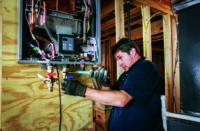
Hydronic heating offers complete, energy-saving system for homeowners When your customers are selecting home appliances, what priorities often drive their decision making? If the answer is cost, comfort, or environmental impact, they may be interested to learn more about hydronic systems, which offer efficient home and hot water heating simultaneously. When it comes to hydronic Read more
Hydronic heating offers complete, energy-saving system for homeowners
When your customers are selecting home appliances, what priorities often drive their decision making? If the answer is cost, comfort, or environmental impact, they may be interested to learn more about hydronic systems, which offer efficient home and hot water heating simultaneously.
When it comes to hydronic heating, there are different options: the hydronic furnace and in-floor hydronic radiant heat, which is most commonly used for homes in cold climates.
Here’s an overview of how one of these systems works and how they can benefit both you and your customers.
What is a hydronic furnace?
Hydronic furnaces connect seamlessly to select tankless water heaters and condensing boilers to deliver efficient, simultaneous home heating and domestic hot water in one complete system. Hydronic furnaces use hot water from a tankless water heater, saving installation costs—and making traditional furnaces seem like a thing of the past. By pairing them with propane-powered water heater, contractors can help their customers enjoy steady, comfortable heat throughout their home.
A propane-powered tankless water heater supplies continuous hot water—unlike a traditional storage tank with a capacity of just 50 or 75 gallons and required time to recover between uses—so the system can pump a constant flow through the heating coil and deliver steady, comfortable heat to the home without the need for a fuel-powered furnace, gas piping or an extra exhaust vent to the atmosphere. At the same time, the tankless water heater performs its primary job without interruption, prioritizing heating the water that is piped to showers, sinks, dishwashers, and washing machines.
These systems can be installed in a new home or added to an existing home and can be paired with an air-source heat pump to maintain comfort and efficiencies—even on cold days when the heat pump can’t keep up. Plus, this does away with the super in-efficient resistant heat coil for the emergency heat mode.

How can this technology benefit my customers?
With a hydronic furnace, homeowners can rely on steady, comfortable heating throughout their home, saving space, energy, and money.
Budget-friendly
A tankless water heater is typically more expensive than a traditional storage tank model, but some manufacturers offer the hydronic air handler for less than a comparable gas-powered condensing furnace. When you combine that with installation savings you end up with a lower cost installed product. Plus, because propane-powered tankless water heaters only heat water when it’s needed, they can help homeowners save more than $150 per year in energy costs when compared with typical electric storage tank water heaters.
Increased comfort and control
Comfort is one of the biggest perks of hydronic heating. In fact, many homeowners report that their heat is less dry than heat radiated via a traditional furnace. With a hydronic furnace, homeowners control the air temperature by setting a thermostat, just as they would with a traditional furnace or heat pump.
Sustainable operation
And for environmentally conscious homeowner customers, they can have peace of mind knowing their system is reducing emissions compared with other energy options. Notably, a propane tankless water heater produces roughly half of the carbon emissions of an electric storage tank system when full lifecycle emissions are taken into consideration. Plus, they’re aiding in water conservation efforts because hydronic systems create no wastewater. Instead, they take the water used to heat the air and recirculate it through the tankless water heater.
How can installing hydronic heating benefit my business?
The benefits of hydronic heating don’t stop with the customer. Plumbing and HVAC contractors can reap the benefits, too. The dual technology presents an opportunity for some plumbers to get into the heating business and some mechanical contractors to add tankless water heater installation to their line of services.
Some industry pros predict that builders will embrace hydronic heating as homebuyers already familiar with the benefits of energy- efficient tankless water heaters learn that those energy- and water-saving devices can also help heat their homes.
Visit Propane.com/Water-Heating to learn more.
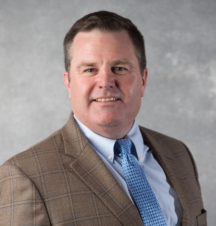 Bryan Cordill is director of residential and commercial business development for the Propane Education & Research Council. He can be reached at bryan.cordill@propane.com.
Bryan Cordill is director of residential and commercial business development for the Propane Education & Research Council. He can be reached at bryan.cordill@propane.com.
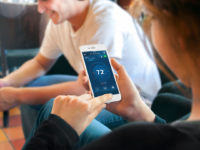
If there is one thing we humans have done almost universally over the past year, it is become more familiar with our living spaces. In that time, people’s attitudes have evolved, and the industry is taking note. The following are some key HVAC trends that highlight what topics are on consumers’ minds—and what manufacturers are Read more
If there is one thing we humans have done almost universally over the past year, it is become more familiar with our living spaces.
In that time, people’s attitudes have evolved, and the industry is taking note. The following are some key HVAC trends that highlight what topics are on consumers’ minds—and what manufacturers are paying attention to.

With Control Comes Power…Literally
Connectivity is one of the watchwords of our time and there are two areas of connectivity that are becoming more important than ever. One is on the consumer side, the other on the contractor side—they both provide greater user interaction and allow for more efficiency in time and energy.
Consumer Connectivity: consumers want more control with their living space. Virtually every day more online tools have become accessible to support this demand. Many manufacturers have recently launched apps to enable users to remotely control their thermostat and provide the diverse settings desired to create the ideal temperature. Early on, the intent was to let the consumer have total and instant control when it came to temperature—when they left their house for the day, they could shut off the heating or air and have it turn back on minutes before they return home. During Covid an interesting thing happened as people spent more time at home… their heating and air bills went up. Consumers quickly learned a key principle about energy efficiency, particularly in the summer or winter months. Instead of using extreme temperature settings, in an effort to be more efficient, they could actually manage their temperature and cost far better by keeping the temperature set at a constant rate. If they leave it at 72 degrees, it will fluctuate between 71 to 73 degrees. This takes less energy to cool the space within that parameter than it does to quickly lower the temperature from 90 to 72 degrees. Another significant efficiency lesson learned is an appliance such as a refrigerator cannot function optimally when the external room temperature reaches temperatures in the 80’s or 90’s. It takes a considerably higher amount of energy for proper heat exchange to keep those perishables cold and the ice cream frozen.
Consumers now want more nuanced control so they can optimize the temperature for specific times of the day and specific activities such as eating dinner, entertaining and sleeping. They have become enlightened to how much more advantageous it is to them to maintain not just temperature for comfort, but for electrical efficiency.
Contractor Connectivity: Today’s products are all manufactured with materials and technology that have improved performance, but parts still wear out, regular maintenance is needed, and repairs are still required. Enhanced connectivity gives new layers of precision to this process. For instance, if something quits or is functioning outside of recommended parameters within a smart HVAC system, it will trigger an automated response to the homeowner with a specific error code. When they call the contractor, the contractor can look up that error code on their app and see what it is specifically referring to. That way, if the compressor needs to be replaced, the contractor can check their inventory and make sure the exact compressor and associated parts are in the truck before they arrive at the customer’s home. This ensures that the service situation is resolved very efficiently. Customers feel taken care of and the contractor can quickly be on their way. Overall, both consumer and contractor are able to exercise far greater control over managing their needs.

Breakneck Speed of Innovation
The Internet of Things has been called the next industrial revolution—and for good reason. Having everything connected changes how we interact with our environment. The challenge is that change is coming much faster than many consumers are comfortable with. Since HVAC systems are all about comfort, manufacturers need to make sure their customers, who have long used an analog system are not intimidated with a complicated digital interface.
For example, a manufacturer brand found that older people who were used to a traditional thermostat were complaining about their experience with an upgraded system. They didn’t like the new touchscreen because there were no “real buttons” to push and too many options. The manufacturer went back to the drawing board and designed a new interface. Today their customers have two options, a slick, flat touch screen or an interface that is just as technologically advanced but includes some very user-friendly buttons that can actually be pushed. Following the trend of aligning the human factors and usability of the technology with the consumer’s level of comfort with the technology has paid off. The push-button option has become by far the most popular option with those over 55.

Everything Electric
In the wake of “heat domes” and hurricanes, the run from fossil fuels is happening faster than ever. The trend for electrification is as hot as the asphalt outside. In the Northeast, cities are placing a moratorium on gas where no new gas projects are allowed, and no new gas lines can be installed in cities for the heating of homes and buildings (only small gas lines for cooking).
One HVAC solution in particular is receiving a massive amount of attention these days. Heat pumps. There are many reasons for this, they are eco-friendly, require no fossil fuels such as heating oil or gas, like a boiler or furnace would use to make heat and they are very effective at both heating and cooling a space. On top of that, they use a small amount of electricity that in many cases can be offset with solar panels. Recent advancements in heat pump technology have overcome one of the greatest stumbling blocks to this option. They used to be limited in how far north products could be installed because of cold winters. Today, new systems can make heat in temperatures as low as -22 degrees Fahrenheit. Now energy-efficient heat pumps can be installed from Mexico to Northern Canada and everything in between.
Another hot item in the electrical area of heating and cooling is an exceptional alternative to traditional HVAC systems, ductless mini splits. These products focus on heating and cooling individual rooms by utilizing a combination of efficient technologies to achieve high SEER ratings while reducing electricity usage. These systems are used throughout Europe and elsewhere in the world and are now seeing a surge in the U.S. Part of the reason for the rapid adoption of mini splits is due to the military’s use of the technology in the middle east for the past 20 years. People saw how effective and efficient these solutions were in handling the extreme hot and cold temperatures found in the deserts and mountains of the Middle East. As they came back, they began to install them in their own homes.
 Guest Blog by Melvin Harris
Guest Blog by Melvin Harris
Melvin Harris is a 22-year veteran in the HVAC industry. He serves as the Director of Residential Sales with Bosch Thermotechnology.

Diversity is a word thrown around quite a bit lately. But, what does it mean? Diversity is “the practice of including and involving people from a range of different social and ethnic backgrounds and of different genders, sexual orientations, etc.” The definition is clear. However, many wonder why diversity is imperative, particularly in a workplace Read more
Diversity is a word thrown around quite a bit lately. But, what does it mean? Diversity is “the practice of including and involving people from a range of different social and ethnic backgrounds and of different genders, sexual orientations, etc.” The definition is clear. However, many wonder why diversity is imperative, particularly in a workplace.
Well, like their customers, workplaces should be diverse. Diversity in the workplace provides diverse insight on customer wants and needs. It also increases productivity by providing an increase in employee morale and involvement within the business. A diverse workforce also allows for diverse opinions on the products and services that the workplace offers.
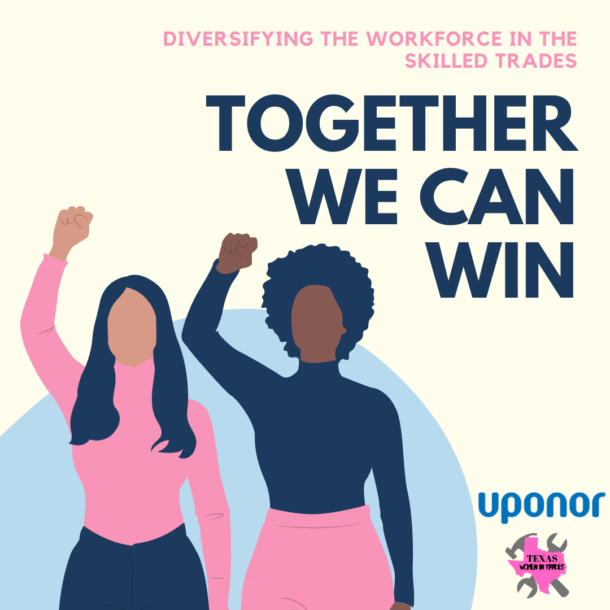
How to incorporate diversity into the workplace:
- Policies should reflect diversity and inclusion – Diversity should be worked into the fabric of the organization’s policies and procedures. This indicates a commitment to diversity and inclusion in all aspects of the organization.
- Offer diversity and inclusion training regularly – This is not a one-and-done concept. Training should be offered by top-tier professionals in their fields. Training should be provided at no additional cost to the employees and should occur regularly.
- Marketing and communications should depict a diverse workforce – If your workforce sees themselves in your brand, they are more likely to commit to and promote that brand. It also sends a message to customers that diversity is paramount to the organization and decision makers.
- Offer mentorship, women’s groups, committees, taskforces, and boards within your organization – These groups, with the support of the organization, offer employees the opportunity to relate to others with similar experiences and work together for the betterment of the organization and society. This is particularly important in construction skilled trades where women are underrepresented. Providing these groups are a great way for employees to connect and prosper.
- Work with leadership and management – It starts at the top. If the leadership and management do not see the value and necessity of diversity, it will not work. Employees must see and believe that their leadership understands diversity and inclusion.
- Encourage an environment of safety and communication – If employees fear retaliation for their opinions, they will stop offering them. Creating an atmosphere that welcomes all forms of constructive feedback allows employees to feel like an integral part of the business and its success.
- Constantly evaluate and revise your methods – The work is never done. Creating a plan and then forgetting about it does not serve the employees or the business. The plan should be constantly scrutinized and improved based off feedback from employees and leadership.
Diversity is here to stay. Denying diversity in the workplace creates a stagnation that will likely not survive our ever-evolving world. Employees and customers have acknowledged repeatedly their appreciation for diversity in the workplace and the world.
 Guest Blogger – Allie Perez founded Texas Women in Trades in 2013, an organization working to bring more women, minorities, and young people to the trades. She also serves as the VP of Marketing and Operations at George Plumbing Co. in San Antonio and on the National Taskforce for Tradeswomen as the Communications Committee Co-Chair. A graduate of New York University, Allie has contributed to trade periodicals for more than seven years. To contact her directly, texaswomenintrades@gmail.com.
Guest Blogger – Allie Perez founded Texas Women in Trades in 2013, an organization working to bring more women, minorities, and young people to the trades. She also serves as the VP of Marketing and Operations at George Plumbing Co. in San Antonio and on the National Taskforce for Tradeswomen as the Communications Committee Co-Chair. A graduate of New York University, Allie has contributed to trade periodicals for more than seven years. To contact her directly, texaswomenintrades@gmail.com.
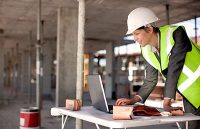
In March, we celebrate Women’s History Month to honor the heroic and historic accomplishments of women in all areas of accomplishment. In plumbing, we look to Lillian Baumbach, the first female master plumber in the United States. Women, like Lillian, paved the way for modern female plumbers and other tradeswomen. The best form of honor Read more
In March, we celebrate Women’s History Month to honor the heroic and historic accomplishments of women in all areas of accomplishment. In plumbing, we look to Lillian Baumbach, the first female master plumber in the United States. Women, like Lillian, paved the way for modern female plumbers and other tradeswomen. The best form of honor is respect. There is no better way to respect tradeswomen than acting like a true ally.
What is an ally? An ally is an individual, contractor, manufacturer and/or retailer who stands with and for tradeswomen.
Women constitute a mere 1.5% of the construction trades industry workforce. With numbers so low, it’s easy to feel alone and isolated in your work environment. Below, find some tips to being an ally.
An ally:
 Mentors – Providing sage advice to apprentices and young people in the skilled trades helps them feel welcomed in their work environment. This extends to facilitating networking and social events.
Mentors – Providing sage advice to apprentices and young people in the skilled trades helps them feel welcomed in their work environment. This extends to facilitating networking and social events.- Does not assume – When in doubt, ask. Also, do not assume stereotypes about women or women who work in the skilled construction trades. Having low expectations of tradeswomen is another gaffe. Do not assume tradeswomen possess less experience or cannot complete the same tasks as a tradesman.
- Isn’t shy – An ally calls people out and does not tolerate inappropriate and demeaning humor or remarks. Additionally, get involved with women’s committees. Both men and women can support women in the trades. An ally can also get involved with policy. Share information about the Paid Family and Medical Leave Act, sexual harassment training, and pregnancy discrimination.
- Doesn’t mansplain – This should go without saying.
- Encourages all voices – Keep an open mind. As a leader, create environments where all voices can be heard and appreciated.
It’s not simple, but it’s worth it. Allies, like tradeswomen, come in all shapes, sizes, colors, and creeds. An ally is a powerful tool for recruitment and retention of tradeswomen. Rest assured, tradeswomen will still be here with or without allies. But, they help to improve the workplace for all.
 Guest Blogger – Allie Perez founded Texas Women in Trades in 2013, an organization working to bring more women, minorities, and young people to the trades. She also serves as the VP of Marketing and Operations at George Plumbing Co. in San Antonio and on the National Taskforce for Tradeswomen as the Communications Committee Co-Chair. A graduate of New York University, Allie has contributed to trade periodicals for more than seven years. To contact her directly, email texaswomenintrades@gmail.com.
Guest Blogger – Allie Perez founded Texas Women in Trades in 2013, an organization working to bring more women, minorities, and young people to the trades. She also serves as the VP of Marketing and Operations at George Plumbing Co. in San Antonio and on the National Taskforce for Tradeswomen as the Communications Committee Co-Chair. A graduate of New York University, Allie has contributed to trade periodicals for more than seven years. To contact her directly, email texaswomenintrades@gmail.com.

 Guest Blog by Melvin Harris
Guest Blog by Melvin Harris Mentors – Providing sage advice to apprentices and young people in the skilled trades helps them feel welcomed in their work environment. This extends to facilitating networking and social events.
Mentors – Providing sage advice to apprentices and young people in the skilled trades helps them feel welcomed in their work environment. This extends to facilitating networking and social events.